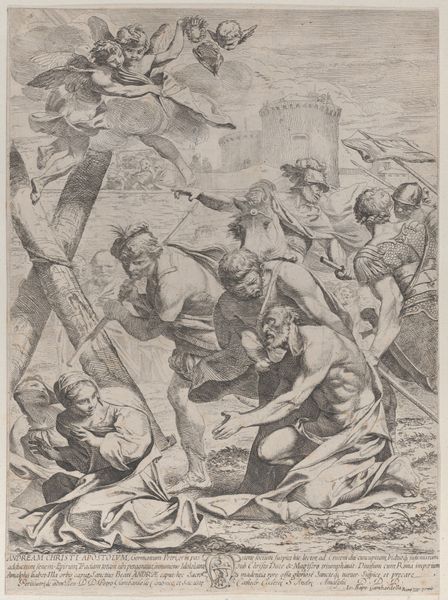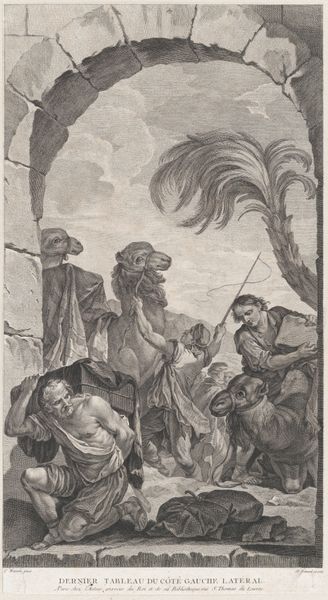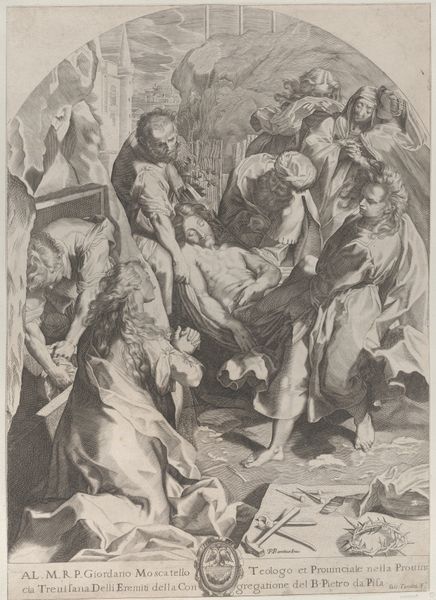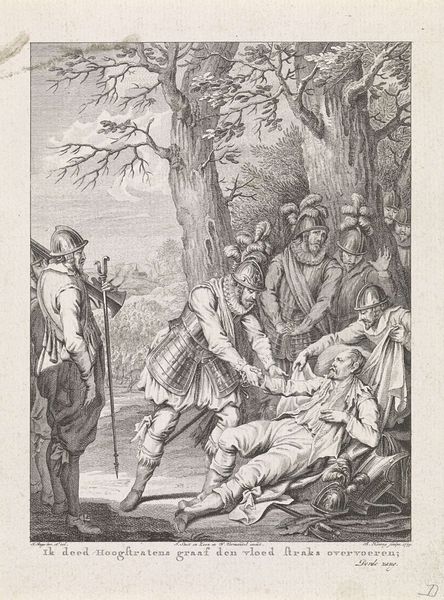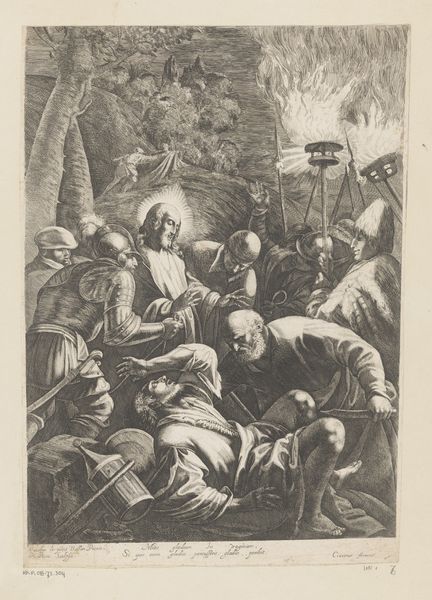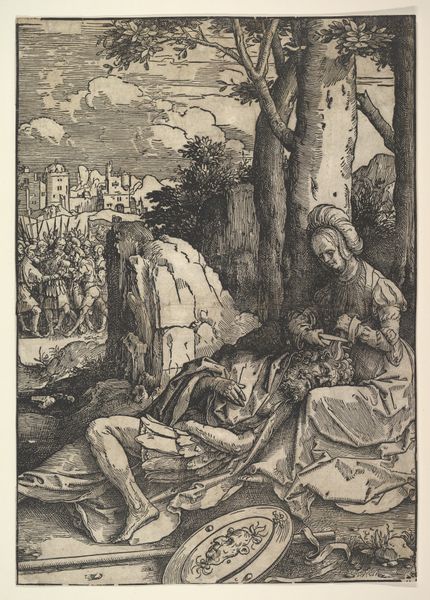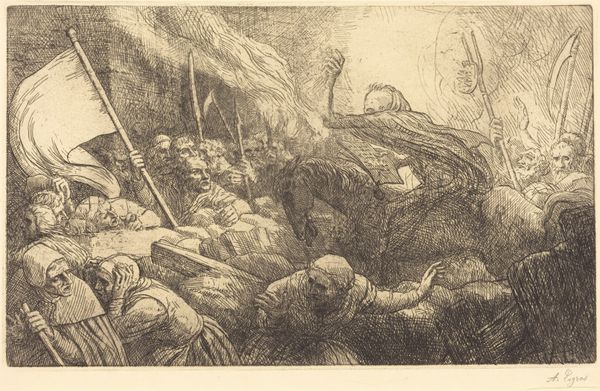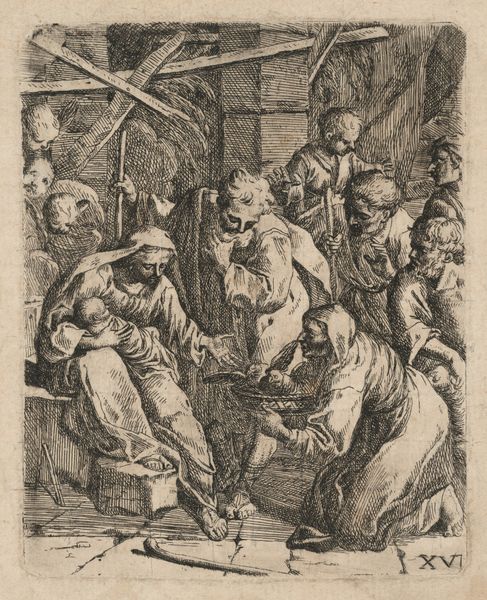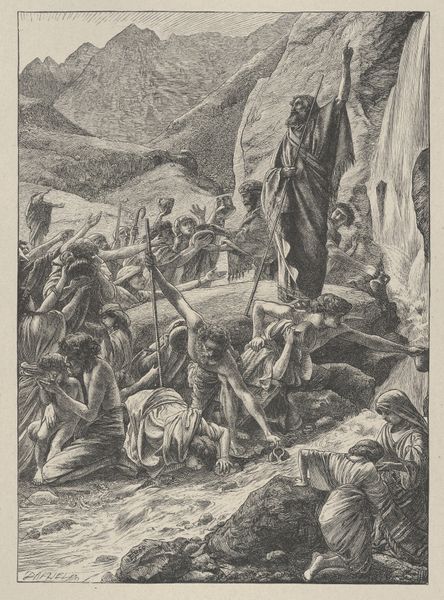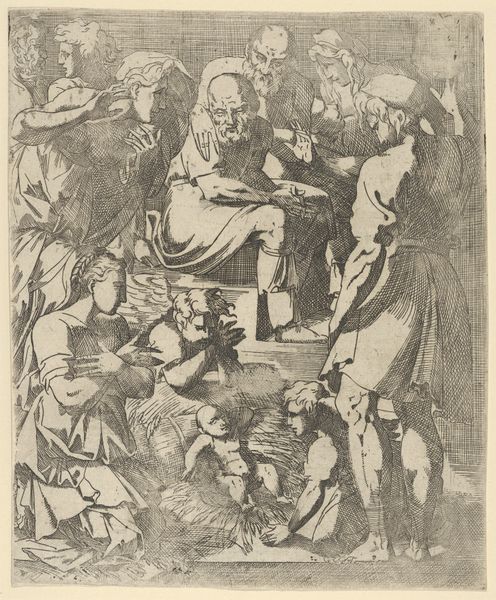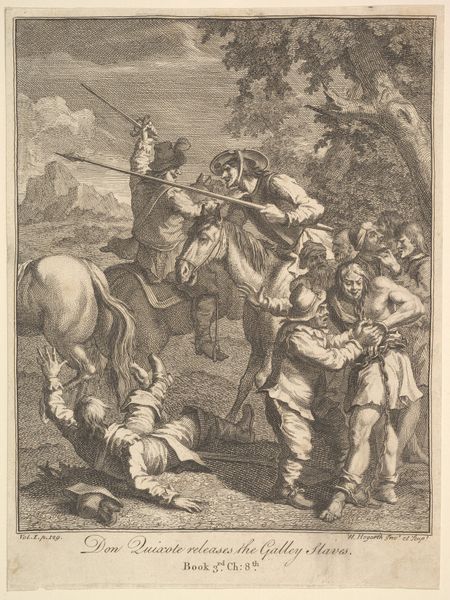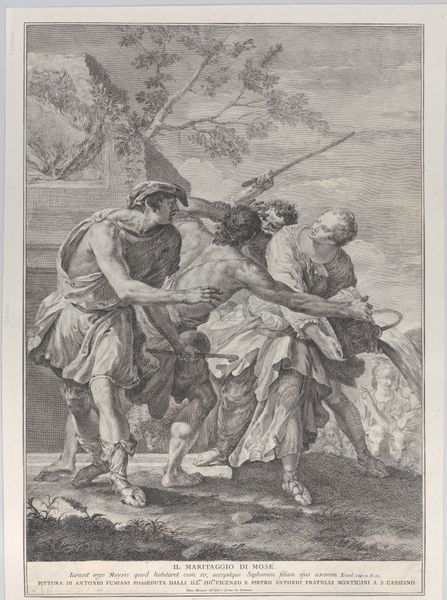
drawing, print
#
pencil drawn
#
drawing
#
amateur sketch
#
light pencil work
#
weapon
#
head
# print
#
pencil sketch
#
human-figures
#
incomplete sketchy
#
charcoal drawing
#
charcoal art
#
pencil drawing
#
pen-ink sketch
#
horse
#
human
#
pencil work
Dimensions: sheet: 11 3/16 x 7 3/4 in. (28.4 x 19.7 cm)
Copyright: Public Domain
Curator: Here we have "The Beheading of St. Paul," an artwork attributed to Michael Lucas Leopold Willmann, created sometime between 1640 and 1706. It’s a print, currently held at the Metropolitan Museum of Art. What are your first thoughts on it? Editor: My first impression is the density of the strokes! It's incredibly graphic in both subject matter and technique. Look at the ground swirling with dark marks like disturbed earth around the beheaded saint. Curator: Absolutely. The density is significant. Willmann was working within a strong Counter-Reformation context. Images of martyrdom served specific didactic and emotional functions. This print, likely intended for wider distribution, needed to convey the drama and significance of St. Paul's sacrifice to reinforce Catholic doctrine. Editor: That's clear when you think about production. Printmaking made this violent scene accessible, reproduced en masse. And the stark black lines—were they deliberate to emulate woodcuts, emphasizing the process of production? The medium certainly heightens the scene's gruesomeness and spiritual gravitas, and for cheap! Curator: Indeed. While the lines might also reflect Willmann's engagement with artistic trends of his time, the reproduction process itself becomes a means of disseminating power. These images reinforced institutional narratives and exerted ideological control across society, from wealthy patrons down to common people. It places the power squarely with Rome. Editor: Consider also how the lines suggest an almost rushed production—not in terms of quality, of course, but of deliberate immediacy. It conveys a kind of ‘urgent message’ element. In an age of burgeoning literacy, images remain powerful communicative tools and that violence became a visual commodity. Curator: Precisely. And let's not forget that the theatricality and visual drama played a huge part in baroque art. The emotional charge was as vital to the reception of this print as any doctrinal message embedded within. The image functions on many levels within its social context. Editor: It's fascinating to consider the brutal realities of both the scene and the techniques behind it, which amplifies the grim historical narrative, through an active consumption and the artistic processes of that period. Curator: Seeing the work in person like this definitely gives an appreciation to the circumstances of image dissemination, in a time when visual media shaped the perception, and thus direction, of political beliefs in a very material manner.
Comments
No comments
Be the first to comment and join the conversation on the ultimate creative platform.
